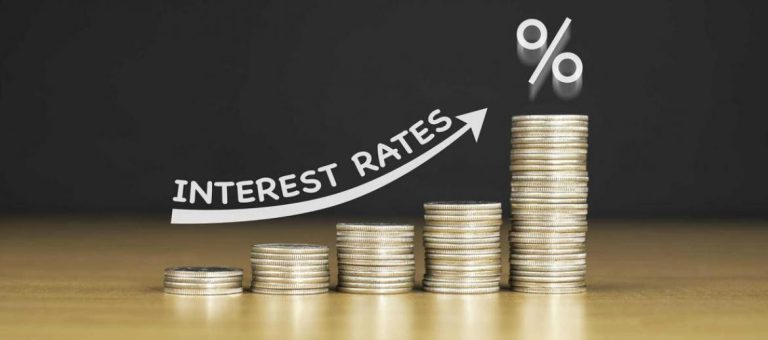Lending a Hand
THE 2022 real estate market has been one for the record books… literally. We came into the year with a perpetual housing shortage as the main topic of conversation, only to see inflation, mortgage rates, and affordability take control of the narrative.
Mortgage rates were forecasted to increase slightly from 2021, to between 3.4% and 4.1%, until inflation reared its ugly head almost doubling those original predictions. At one point rates were rising at the fastest pace in history and have since topped 40 year highs. As a result, affordability (which was already low thanks to price appreciation over the prior years) plummeted further. Facing higher rates and even higher prices, many buyers have been forced out of the market or to reevaluate their preferred price range at the very least. Statistically, mortgage demand dropped 39% from the previous year. Weakened demand is causing available homes to stay on market longer, leading to price corrections or reductions in many cases.
As an example, at a 3% rate that was available during 2020 or 2021, a $400,000 mortgage would cost roughly $1,700 per month (not including property taxes, homeowners insurance, or mortgage insurance). That same mortgage at today’s rates (7% for the purpose of the example) would now cost almost $2,700 per month. A $1,000 difference in payment for the same house, at the same price has massive consequences for overall affordability and demand.
So, what will 2023 bring? In some ways, it’s anyone’s guess. In others, we can look at trends and data to make some assumptions, but only time will tell.
What will mortgage rates do in 2023? As the Fed continues to try and get inflation under control, it is widely expected that rates will come down. How much they will come down depends on multiple factors outside of anyone’s control. Generally, rates under 6% by mid-year and under 5% by year end are a reasonable projection; but if inflation maintains longer than expected or if the economy remains resilient despite rising rates and ongoing monetary policy, higher rates could persist longer. Regardless, mortgage rates should become much healthier as 2023 progresses, bringing back a lot of buyer demand and stabilizing the local real estate market.
Will home prices come down? Nationally, a decline of 1.5% is the expectation, but locally in the Northeast we are likely to see prices remain flat or even a small percentage increase, but a far cry from the near 20% growth seen in 2020 and 2021. The larger impact to price stability is still the shortage of housing. To put it simply – there are not enough homes available to satisfy the level of demand. This has been the theme for years and will likely continue. As mortgage rates stabilize and decrease, buyer demand will once again pick up, only causing the shortage to be even further inflated and will keep home prices stable, with potentially moderate increases in some areas.
What about housing inventory? Homes are sitting on-market for much longer than the prior 2 years due to the decreased buyer demand. This is giving the impression of a healthier level of inventory, but we aren’t seeing as many new homes hit the market as a result of fear over rates and activity. Many would-be home sellers feel as though they are in “rate jail,” having refinanced during the historic lows of 2020 and 2021 and are now looking at the potential of a new mortgage with a rate in the 7’s. As rates cool off, it is expected to have a positive impact on overall real estate activity so we should see an uptick in new listings and more opportunities for home buyers.
Should I buy now, or wait until next year? This is the most common question from homebuyers in today’s market. The short answer is – it’s always a good time to buy if you can afford to do so! The tighter market we are in currently actually provides a few options to buyers that were not a reality in the more recent past. Less demand is a good thing for buyers; Seller help (in the form of credits to pay down closing costs, or to buy down an interest rate) is becoming much more common. Home inspections are back as part of almost every offer. Even as simple as not having to pay wildly over asking price is a major benefit to buyers. Expecting that home prices will continue to increase, there is a trade-off between buying now at a higher rate (and refinancing when rates come down) vs waiting and paying more for the same home at a lower interest rate. I am always encouraging buyers to buy when they are ready and can afford to, and not trying to “time the market.”
OVERALL, the 2023 real estate market should show signs of being healthier and more balanced, but a lot has to happen before then. The first quarter of the year will most likely mirror what we’ve seen so far in the 2nd half of 2022. By April or May we should see mortgage rates starting to decrease… just in time to boost demand and activity for a strong spring market!
***

Anthony Lapolla is a seasoned mortgage lender with over a decade’s experience in qualifying his clients at their best rates during real estate purchases. He and his team have built a foundation throughout Boston and its surrounding areas around integrity and transparency that feels like “home” the moment you meet him. Anthony and is wife Meaghan have been married for 5 years, live in Peabody and welcomed their first child in July ’22!















